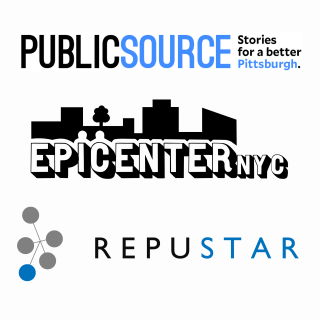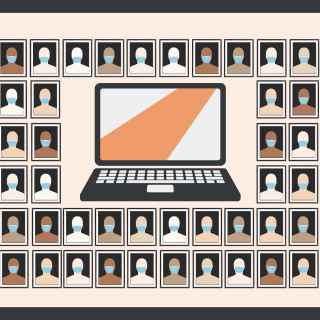
Every semester, Lori Shontz asks her journalism students at the University of Oregon to imagine if they were to cover a mass shooting.
“It’s very stressful, but I think it’s really important. Otherwise, you’re just going to run on adrenaline. And how would you know what to do?” Shontz asked. “You just don’t.”
Many journalists don’t. But Shontz’s exercise is a useful one borne from experience.
In 2015, when a shooter killed nine people at Umpqua Community College in Roseburg, Oregon – just an hour from the University of Oregon in Eugene – three of Shontz’s students went to cover it.
The proximity of the tragedy inspired Shontz and fellow University of Oregon professor Nicole Dahmen to research ways to minimize harm in communities affected by violence, while accurately reporting on the tragedy. The two professors partnered to create ReportingRoseburg, an in-depth project focused on 19 of the journalists who covered the mass shooting at the community college.
In separate interviews that spanned 45 minutes to two hours, the reporters discussed their experiences from the ethical challenges they faced to their reporting techniques for covering a dangerous incident.
Shontz wanted to learn what journalists could do to make communities affected by violence healthier and how best to minimize harm when covering them.
“As awful as it is to think about how we’re going to do this, or what should we do, journalists need to take time to think about how they would cover a mass tragedy before it happens,” Shontz said. “There needs to be more discussion and debriefing.”
Marjory Stoneman Douglas student speaks out
Shontz shared her ideas on a panel with Marjory Stoneman Douglas student activist Delaney Tarr and The Trace reporter Akoto Ofori-Atta at ONA18.
Tarr recalled the overwhelming media presence in the days after the Parkland, Florida shooting.
“There was a lot of a lot of lines being crossed in the days after the shooting at my school,” Tarr said. “In the days after the vigil, I distinctly remember reuniting with my friends who I hadn’t saw since it happened and sobbing into their arms, and hearing the click of a camera inches from my face.”
When tragedy happens, the media pours in. They leave soon after, too quickly to cover the grieving process or how a community recovers, said Shontz. Journalists must examine whether what they choose to cover is contributing to the number of mass shootings.
“We give an immense amount of coverage to school shootings and mass shootings, which are quite rare compared to day-to-day violence,” Shontz said. “Those news values that we teach give a large emphasis to this.”
For example, criminologist Adam Lankford has conducted research on people motivated by media attention, or fame-seeking mass shooters. He has said this category of shooter seeks out attention and is aware that this kind of act will bring them that attention.
Shontz said the 2015 incident was an example of this: “Seems the more people you kill, the more you’re in the limelight,” the Umpqua Community College shooter wrote in a blog post.
What can journalists do?
“I think we need to be careful about this,” Shontz said. “I’m not in the business of withholding names. That’s not what I do as a journalist. But I do think that the name doesn’t need to be in the lead. The name doesn’t need to be in the headline. There do not need to be repeated photos in the article.”
What reporters choose to put in headlines and leads can be an issue in all forms of violence. Tarr, as well as many of the student activists from Marjory Stoneman Douglas Strong are a part of the #NoNotoriety movement – which aims to keep the names of perpetrators out of the limelight.
“They’ll show their face, they’ll show their words, they’ll show their name, they’ll talk about them,” said Tarr. “But ultimately that’s not where we want the narrative to be focused. All that does is retraumatize us, to give some small incremental knowledge to the public. Knowledge that doesn’t change anything.”
Tarr added that knowing the name of a shooter is fine, but the focus should not be on them alone. “This is about focusing on the victims, the survivors, the heroes. Every person that was affected by it. There’s 3,500 kids and each has their own story. Why focus on the one that was horrible?” she asked.
Don’t put people in danger
Using social media to report on violence comes with a lot of responsibility. Many reporters were criticized when they chose to contact students inside Marjory Stoneman Douglas High School in Parkland, Florida, while the shooter was still at large.
“I don’t think there’s any need to be putting that level of information out there right away, without verifying it,” Shontz said. “I think the Parkland students did an amazing job of covering their own story, and owning their story.
“But I cannot understand any circumstance where I would ever contact someone who was in danger and say, ‘Hey, can you give me more info about what’s going on?’ That should just be stopped. There is no reason to do that.”
Moving forward, Shontz said she hopes newsrooms will become more intentional with their coverage, and continue to ask questions about the reporting processes in violent incidents.
“I think there’s a sense among many journalists that if we can shed light, if we can explain the horror of this, and if people really understand this, something will happen,” Shontz said. “It’s (been) 20 years and nothing’s happened. Not only is nothing changing, but it’s getting worse. Do we have any role in that at all?”







You must be logged in to post a comment.